How Do Giant Spiders Get in the House?
Giant spiders are one of the many pests that can find their way into your home. While most spiders are harmless, some species can be dangerous, and giant spiders can be frightening due to their size.
Have you ever found a giant spider in your house? Have you ever gone to bed only to be woken up by a giant spider crawling on your face? It’s not a pleasant experience. It’s enough to give anyone a heart attack! But how do these spiders get into our homes in the first place?
What are Giant House Spiders?
The giant house spider is a large, common insect found all over Europe. They’re also native to Africa and Asia but have made their way into North America, where numbers are steadily increasing!
The giant house spider is one of the most common spiders you’ll find around your home. It’s typically much larger than its cousin, House Spider (Tegenaria Domestica), and can often be spotted living under furniture or in closets where they wait for prey.
What do Giant House Spiders Look Like?
Giant house spiders are large, black, gray, or brown spiders patterned with white, yellow, or orange markings. Their hairy bodies range from .5 inch to 1 inch, and 4″ leg span for male while female has only a 2″ leg span.
Like any other spider species, they have eight legs, two body segments, and fang-like mouthparts called chelicerae. They also have a pair of small eyes on the front of their head, which they use to see their prey. Giant house spiders also have pedipalps, which are two short arms between their front legs. These “paws” help them grab and securely hold onto prey with enough force to break bones or even kill small animals!
Giant house spiders are often mistaken for hobo spiders or brown recluse spiders, both of which are dangerous to humans. Identifying a giant house spider is important to safely remove it from your home.
Habits of a Giant House Spider
Giant house spiders are nocturnal predators, which means they hunt at night. They’re attracted to homes and other buildings because they offer plenty of places to hide and build their webs. These spiders will build their webs in any sheltered area, such as a garage, basement, under the furniture, and in between boxes.
During the day, giant house spiders hide in their webs or cracks and crevices around your home. At night, they’ll come out to hunt for food. Their diet consists of small insects, such as flies, mosquitoes, and beetles.
Giant house spiders are mostly harmless and run away when disturbed. However, they can bite if they feel threatened. Giant house spider bites are not poisonous but can be painful and cause swelling.
How Do Giant Spiders Get in the House?
Giant spiders usually enter homes through small cracks and openings, such as doorways, windows, and vents. However, they can also come inside on clothes, shoes, bags, or boxes stored in a garage or shed. They are also hitchhikers and can enter your home on potted plants.
To prevent giant spiders from entering your home, seal all cracks and openings outside your house. Repair or replace screens on doors and windows, and ensure that vents are properly covered. Inspect any clothing, shoes, or boxes stored in a garage or shed before bringing them inside. And be careful when bringing potted plants into your home.
Vacuuming is also an effective way to remove spiders and their webs from your home. If you see a spider, you can gently place a cup over it and slide a piece of paper underneath to trap it. Then, release the spider outside.
Although giant house spiders are beneficial because they help control the population of pests, many people consider them a nuisance and want them out of their homes. If you have a giant spider problem, contact a pest control professional to safely remove them from your home.
Conclusion:
Giant house spiders are mostly harmless, but their large size can be intimidating. They enter homes through small cracks and openings and build their webs in sheltered areas. To prevent them from entering your home, seal all cracks and openings outside your house and inspect any clothing, shoes, or boxes stored in a garage or shed before bringing them inside. If you have a giant spider problem, contact a pest control professional to safely remove them from your home.
Related Articles
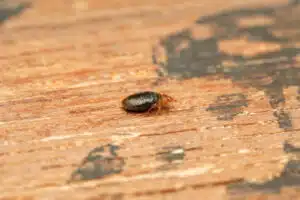
Tick vs. Bed Bugs: Differences and Similarities
Understanding the differences between two common blood-sucking pests, ticks and bed bugs, is important. We want to make sure you know exactly what kind of pests you’re dealing with,
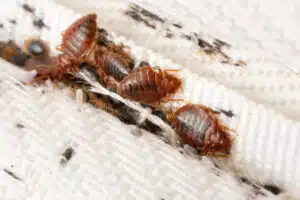
Where Do Bed Bugs Come From, and How to Prevent Them? A Guide for Salt Lake Residents
Bed bugs can be a major nuisance and cause various physical and emotional problems, including skin irritation, anxiety, and sleep disturbances. In Salt Lake City, bed bugs are a growing concern, especially in apartment buildings, hotels, and other high-density living spaces. But where do bed bugs come from, and how can you prevent them from infesting your home or property?
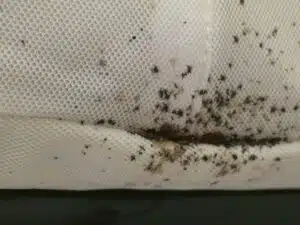
Are All the Tiny Black Bugs in My Bed Bed Bugs?
Sleeping is one of the things that we look forward to after a very long day. We recharge ourselves by sleeping by the end of the night to be refreshed the next day. But we can be disturbed even during our sleep by pesky pests crawling and hiding where we sleep. That’s terrifying, right? Pests that are known to annoy us during our sleep are bed bugs. They are usually found where humans and other pets sleep. Bed bugs can be almost anywhere in the world – even in your Saltlake home! They can be annoying because they suck your blood and leave you with an itch and bumps in the infected area. So blood attracts them, even the blood of other animals. Therefore, you should conduct bed bug removal if you have them. If you find bugs on your beds, you might think they are bed bugs. But are they?
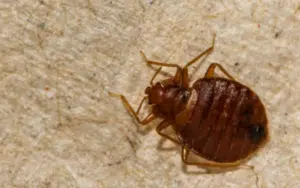
Can Bed Bugs Live in Your Car?
Bed bugs are small, flat, and oval-shaped insects that feed on the blood of humans and animals. During the day, bed bugs hide in cracks and crevices around beds, furniture, and baseboards. You can also find them in mattresses, bed frames, blankets, carpets, and other fabric items throughout your home. While it is possible for bed bugs to infest your car, they’re less likely to do so than inside a house or other structure.
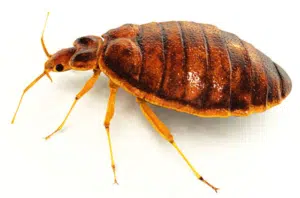
How to Find Bed Bugs in Your Home
Bed bugs are small, blood-sucking that feed on human and animal blood. They belong to the family Cimicidae, contain over 100 species, and have been around for millions of years.

Can Bed Bugs Jump?
Bed bugs are a common household pest that can be difficult to get rid of. These tiny insects can live in any crevice or crack in your home and feed on blood.
